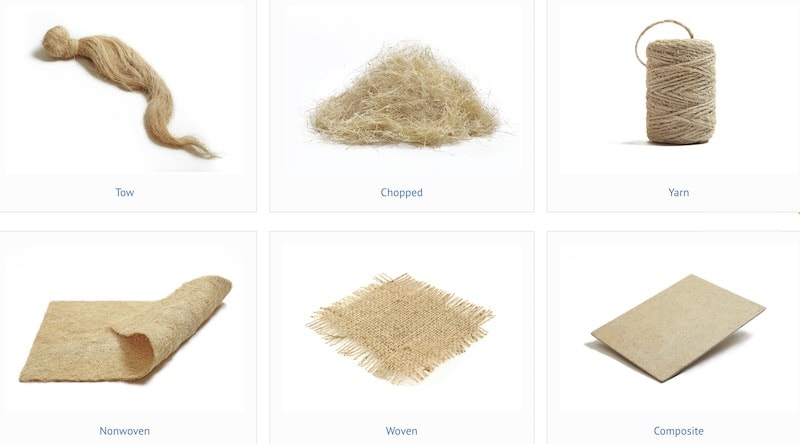A consortium of five Egyptian researchers has developed the world’s first high-performance fibres and reinforcements extracted from the byproducts of pruning of date palms, such as fronds and fruit branches, also known as PalmFil.
The fibre is not only sustainable but also economical in manufacturing, compatible with textile and composite processing and offers the properties needed for lightweight cars of the future.
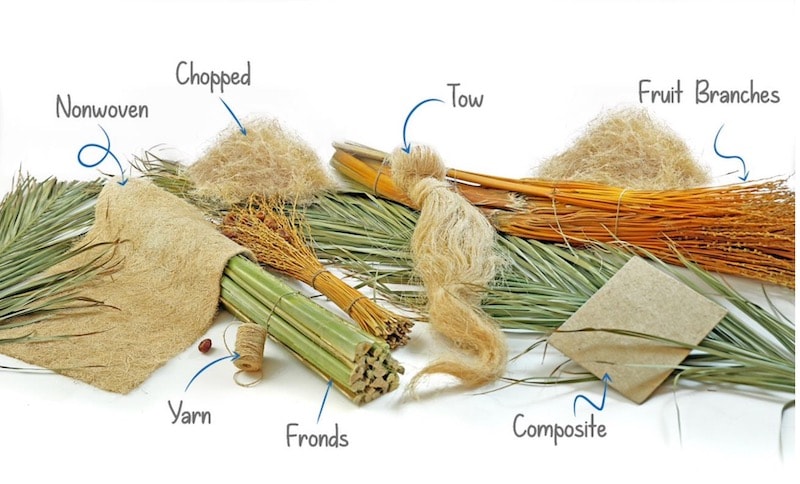
“In the 1980s the shift from natural fibres to manmade fibres was mainly to bridge the gap between the increasing demand for textile fibres and the limited supply of natural fibres. In order to reverse this shift, there is a need to explore more sources of natural fibres and increase the biodiversity of fibre crops. This is actually what we did, there are more than 140 million date palms mostly concentrated in the Middle East and North Africa, generating yearly more than 4.8 million tons (dry wt.) byproducts of pruning regarded as agriculture waste. This represented a burden on palm growers and was the main cause of fire accidents and infestation by dangerous insects. Those byproducts could otherwise be transformed into 1.3 million tons/year natural textile fibres, ranking third after cotton and jute.” Dr. Mohamad Midani, Partner, PalmFil Consortium said.
How PalmFil fights wildfire in date palm plantations!
There are more than 140 million date palms mostly concentrated in the Middle East and North Africa, generating yearly more than 4.8 million tons (dry wt.) of byproducts of pruning regarded as agricultural waste. This represented a burden on palm growers and was the main cause of fire accidents and infestation by dangerous insects.
Instead of burning, PalmFil will transform those byproducts into 1.3 million tons/year of natural textile fibres, which will help to reduce the number of these catastrophic events.

There have been several previous attempts to extract fibres from date palm byproducts through crushing and grinding, resulting in biomass rather than textile fibres. PalmFil consortium succeeded in extracting the first long textile fiber from such byproducts and converted it into fibre tow, chopped fibre, spun yarn/ roving, nonwoven mat, woven fabric, and unidirectional tape. The new fibre represents a sustainable material base for a wide spectrum of industries. Ranging from natural reinforcements for composites in automotive and sporting goods, plaster reinforcements in construction, burlap sacks for packaging, ropes, and twines, non-wood papers, and other consumer products.
“Date palm byproducts have been used for centuries in the Middle East and it is a heritage-related material. It is culturally embedded in Middle Easterns but possibly forgotten in modernity. Recent R&D conducted by PalmFil consortium demonstrates the potential of date palm fibre; its use in the modern context and in industrial settings. The revival of the fibre sector in the Middle East will need dedication and national commitment. The use of date palm fibre is not the issue. The use of most natural materials like the date palm fibre contributes towards maintaining biodiversity, provide employment and income and enable sustainable development in general. However, the key to its revival will be the national will and support to encourage the development of a reliable supply chain that can service the various production sectors that could use the fibre.” Mr. Dilip Tambyrajah, Secretary-General, International Natural Fiber Organization Said.
“It has been a long five years marathon of self-supported research, relying completely on our personal funding and driven by a strong believe on the impact of such innovation on the sustainable development of rural communities and their livelihoods. We wanted to rediscover this underutilized resource, and prove to the whole world that we could economically extract textile fibers from it, without abiding by the agenda of any funding institution.”Dr. Ahmed Hassanin, Partner, PalmFil Consortium said.
The new date palm fibre is obtained from renewable bioresources and it does not cause deforestation or compete with food production. It is 100% biodegradable and compostable and has specific tensile strength 5 times higher than structural steel, and equal to those of flax, hemp and sisal. Its vibration damping and acoustical insulation are higher than those of glass and carbon and with thermal insulation higher than carbon. Moreover, it can be easily blended with other long fibers such as flax, sisal, and abaca, or it could be chopped and blended with hemp, kenaf, and jute.
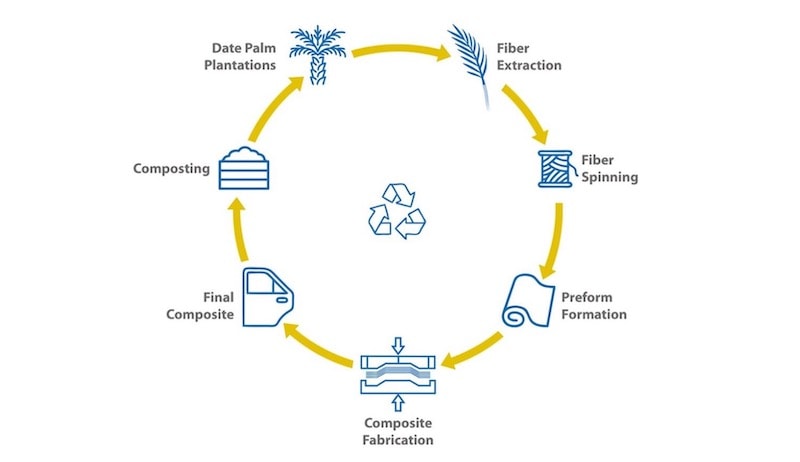
“We did comprehensive research to optimize the extraction process and we did a thorough characterization of the new fibre. The research results were very well received by the scientific community and featured in research and review articles in some of the most prestigious scientific journals in the field, such as, Industrial Crops and Products (Elsevier) and Cellulose (Springer). The new fiber was also well accepted by the industrial community in Egypt, and it has been processed on a full industrial scale spinning line at the Egyptian Industrial Center of Flax. We are currently establishing connections with the leading automotive manufacturers in Europe, and we are conducting dedicated research on date palm fiber composites in automotive.” Dr Tamer Hamouda, Partner, PalmFil Consortium Said.
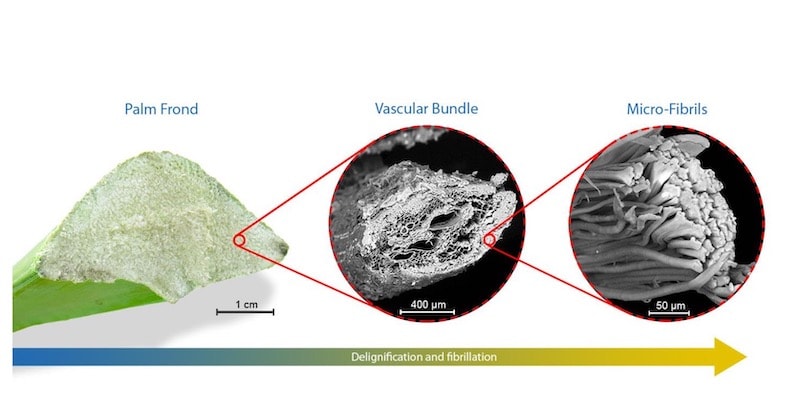
PalmFil technology contributes to the circular bio-economy following a closed-loop cycle from cradle to cradle. Moreover, the extraction technology could be applied to byproducts of other palm species such as oil palm, sugar palm, and doum palm as well as other agricultural byproducts such as broomcorn.
PalmFil consortium have more than 50 years of combined experience in fibre science, textile technology and composite engineering. They are currently seeking partnerships to further develop, scale up, and commercialize PalmFil technology. They have recently launched a website to commercially announce their innovation, and they will present more about the new material in an upcoming live webinar that will be announced soon.
Features and Benefits of PalmFil
Sustainable & Biodegradable
PalmFil is obtained from renewable bioresources and it does not cause deforestation or compete with food production. It is 100% biodegradable and compostable and has the ability to naturally degrade into its basic constituents and return back into the environment.
It is a native cellulose, unlike regenerated cellulose which has issues with solvent recovery. PalmFil is carbon dioxide neutral and it preserves the local farming cultures and technical heritage
Abundant
Date palm is the main element of flora in the MENA region, with very high populations in Saudi Arabia, Iran, UAE, Iraq, Egypt and Algeria. Their estimated global population is 140 mil palms, generating 4.8 mil tons/year byproducts of pruning.
The estimated fiber availability from those byproducts is 1.3 million tons/year, ranking third after cotton and jute. Palm pruning is performed year round, hence consistent supply with no seasonality issues
Economical
Palmfil is obtained from palm byproducts and does not require extra investment in water, fertilizer, pesticide or land. Those byproducts are often regarded as agricultural waste, with zero price in field. The valorization of these byproducts can provide an extra source of income to palm growers and can generate thousands of decent jobs. In addition to, creating entire value chain within rural communities.
Strong
PalmFil specific tensile strength is 5 times higher than structural steel, and equal to those of flax, hemp and sisal. Its vibration damping and acoustical insulation is higher than those of glass and carbon and with thermal insulation higher than carbon. PalmFil has cellulose purity up to 70% and thermal stability up to 226 °C.
Light Weight & Safe
PalmFil is 50% lighter than glass fiber, and 8% lighter than flax and hemp. It is safe for working health and does not require special personal protective equipment while handling. It also does not erode machine parts and production tools.
Bonding & Blending
PalmFil has protruding side fibrils that create mechanical interlocks in a composite matrix. It can be easily blended with other long fibers such as flax, sisal, and abaca, or it could be chopped and blended with hemp, kenaf, and jute. PalmFIl is compatible with existing spinning and weaving technologies of hard vegetable fibers.
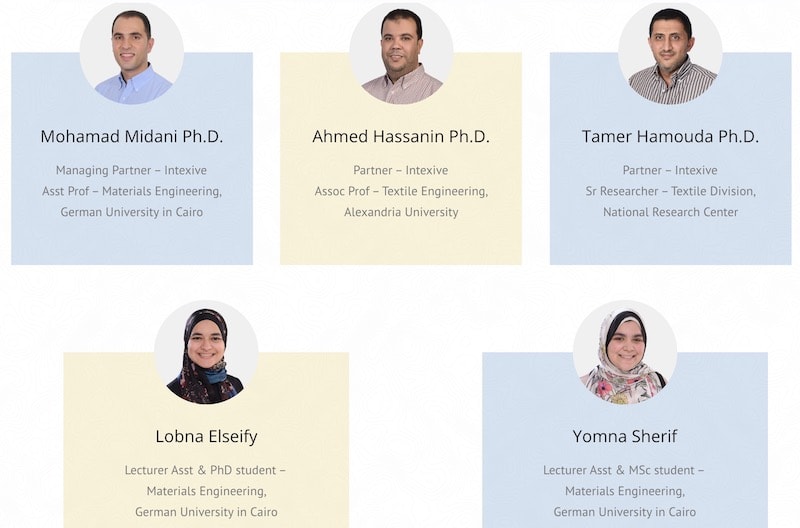
Applications and Industries
The unique features and characteristics of PalmFil make it an excellent sustainable material base for a wide spectrum of industries. Ranging from natural reinforcements for composites in automotive and sporting goods, plaster reinforcements in construction, burlap sacks for packaging, ropes, and twines, non-wood papers, and other consumer products.
Automotive
Door panels
Parcel Shelves
Engine encapsulation
Rear trunk cover
Seat backs
Acoustic insulation
Construction
Gypsum plaster reinforcements
Thermal insulation batts
Façade composites
Fiber-lime bricks
Floor covering
Sporting
Surfboards
Snowboards
Bicycle frames
Skis
Longboards
Canoes and yachts
Packaging
Burlap sacks
Hessian fabrics
Food & beverage containers
Ropes
Ropes
Twines
Geomats and nets
Nonwood Paper
Bank notes
Decorative papers
Filter papers
Capacitor papers




